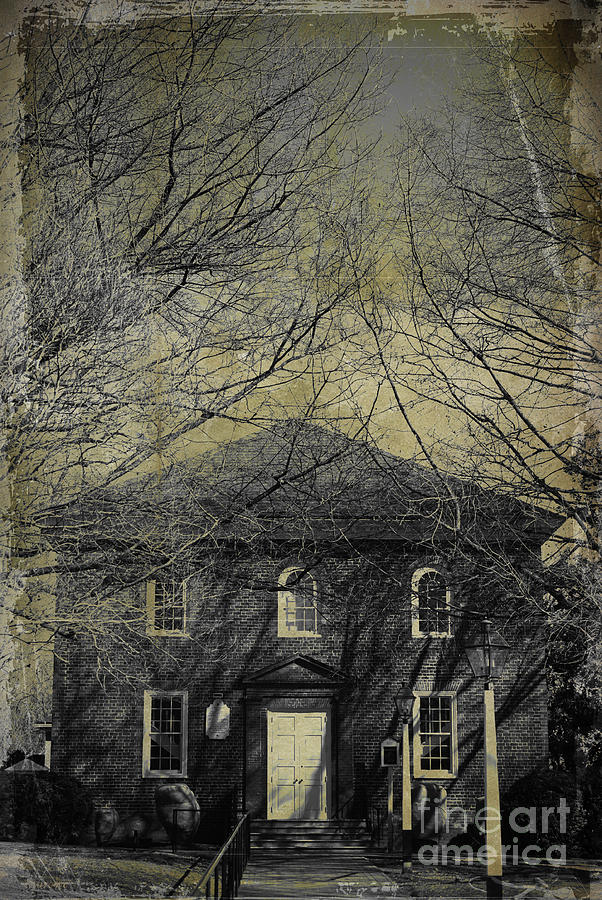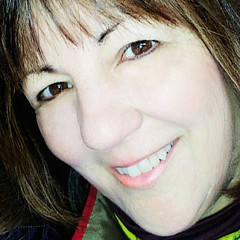
The Falls Church

by Terry Rowe
Title
The Falls Church
Artist
Terry Rowe
Medium
Photograph - Digital Photography
Description
Photograph of The Falls Church, which has been processed to reflect the age and history of this simply beautiful brick building designed by James Wren. This brick meeting house dates to 1769, James Mason and George Washington were vestrymen of the church. Tradition holds that the Declaration of Independence was read from the church steps, it was a recruiting station for the Revolutionary War, used as a hospital and a stable during the Civil War. And still it stands, solid in history.
The Falls Church historically refers to the church from which the city of Falls Church, Virginia, near Washington, D. C., takes its name. The parish it originally served was established in 1732 and the brick meeting house preserved on site dates to 1769.
Colonial beginnings. The forerunner to The Falls Church appears to have been founded by landowner William Gunnell, who had moved from Westmoreland County, Virginia in 1729. In Spring 1730, he secured a minister and convened a congregation, which met in his home until 1733, when the first building was constructed. Until that time, this area was served by clergyman who lived near present-day Quantico, and the nearest church was Occoquan Church near Lorton.
Known as "William Gunnell's Church," this wooden structure was designed and built by Colonel Richard Blackburn, who was directed to construct a weather boarded building forty feet by twenty-two feet, with a thirteen-foot pitch roof, and with interior work modeled on that of the Pohick/Occoquan Church; cost was 33,500 pounds of tobacco. It served Truro Parish, which was established by the colonial Virginia Assembly in May 1732, divided from a larger Anglican parish centered at Occoquan; Truro's first vestry met in November 1732. Michael Reagan allowed the church to be built on his land, but failed to grant the deed. John Trammell later bought the land and, in 1746, sold the two acre lot, including the church, the church-yard, and a spring, to the Vestry of Truro Parish. By this point, it was known as the Upper Church.
The Vestry Book first referred to it as the "Falls Church" on 28 November 1757, owing to its location at the intersection of the road to the Little Falls of the Potomac River (upstream of the Chain Bridge) and the Middle Turnpike (leading from Alexandria to Leesburg, now Virginia Route 7 or Leesburg Pike, called West Broad Street in downtown Falls Church City).
George Mason was elected Vestryman in 1748, as was George Washington in 1762.
The new brick church. In 1762, the wood building was judged to be "greatly in decay". The vestry (the church governing body), meeting at The Falls Church, ordered a new brick building constructed on the same site. In 1763, George Washington and George William Fairfax were appointed church wardens with responsibility to contract for a new building. This was Washington's last official act on behalf of this church after the parish was divided in 1765 and before work began. After 1765, the seat of Truro Parish, which had been here, returned to the southern part of the county and this church became the seat of the new Fairfax Parish.
Work on the new church was begun in 1767 by Colonel James Wren who had designed the building and was a member of the vestry as well. The new building was completed late in the fall of 1769, at which point it became the seat of the newly-formed Fairfax Parish. The Wren building remains on the site, between S. Washington, E. Broad, and E. Fairfax Streets. It is the oldest remaining church building north of Quantico in Virginia.
Revolution, disestablishment, abandonment, & re-establishment. During the Revolutionary War the building was a recruiting station for the Fairfax militia. Tradition holds that the Declaration of Independence was read to local citizens from the steps of the south doors.
Following the Revolution, in 1784, the Commonwealth of Virginia enacted disestablishment of the Anglican Church, revoking its status as state church. Shortly thereafter, in 1789, The Falls Church was abandoned and was not re-occupied again until 1836, by an Episcopal congregation.
Those whose leadership helped to once again open the doors of the church for worship included Francis Scott Key, who was a lay reader, and Henry Fairfax, who used his own funds to restore the building. Several of the early students and faculty members of the Virginia Theological Seminary traveled to The Falls Church to hold services.
Civil War disruption & damage. Services were again disrupted during the Civil War when the church was used by Union troops as a hospital and later as a stable. An active congregation has worshiped here continuously since about 1873.
The interior was repaired by Fairfax in 1838-39, again after the Civil War, and remodeled in 1908. The most extensive renovations were completed in 1959. At that time, the galleries, which had been provided in Wren's design but were omitted from the original construction, were finally installed and a new chancel was added.
The structure of the church, except for repairs of war damage and the chancel addition, is the original 1769 construction. Some of the repairs made after the Civil War are evident in brickwork below the windows and in the lower part of the brick doorway at the west end of the church. The Federal Government repaired and paid for the damage caused by Union forces.
Memorial Markers: Several pews have silver markers. Those on the fifth row are in memory of George Washington and Robert E Lee. They were given by local chapters of the Daughters of the American Revolution and the United Daughters of the Confederacy in 1926.
Baptismal Font: This stone font is from the colonial period. It was taken to the Star Tavern by a soldier and consigned for shipment to his home around 1863. It was recognized and hidden by local townspeople, and returned to the church in 1876.
Churchyard: The oldest marked graves (1805) are below the large white oak in the south yard, but earlier burials occurred here. Records show payments in 1778 to the sexton for mending graves. Rounded indentations in the 1805 stone likely resulted from bullets fired by soldiers quartered here in 1861-65. A Revolutionary War veteran's grave is near the wall, west of the 1805 stone. A monument commemorating Henry Fairfax's restoration of the church, in the 1830s, is near the west end of the south walk. The inscription is copied from the text of a lost plaque reported by a Civil War correspondent in Harper's Weekly of August 31, 1861. At the west end of the front walk is a marker for an unknown Confederate soldier. Near the north fence is the grave of Mr. Read, minister of the Baptist Church who was shot by Col. Mosby (the "Gray Ghost" of the Civil War) as a spy in 1862. Near the north walk, four dornicks (rough, low stones) predate any standing gravestones.
The oldest tree on the grounds is a huge white oak (south yard) - it is the largest specimen of Quercus alba now recorded in Virginia. Other large trees include a tulip poplar, hickory, silver maple and American holly. Major trees are marked with common and botanical names.
I hope you will consider acquiring one of my photographs for your personal enjoyment or as a gift.
Please feel free to share any of my art works with family and friends by forwarding the link. If you are on Facebook, please visit my page, tART - Photography & Art by Terry Rowe, https://www.facebook.com/tarrowe. Thank you for visiting and viewing my work!
Note: Watermarks will not appear on final prints.
Copyright Notice: All images on this web site are protected by the U.S. and international copyright laws, all rights reserved. The images may not be copied, reproduced, manipulated or used in any way, without written permission of Terry Rowe, artist. Any unauthorized usage will be prosecuted to the full extent of U.S. Copyright Law.
Uploaded
January 5th, 2013
Statistics
Viewed 1,195 Times - Last Visitor from New York, NY on 04/25/2024 at 10:14 AM
Embed
Share
Sales Sheet































